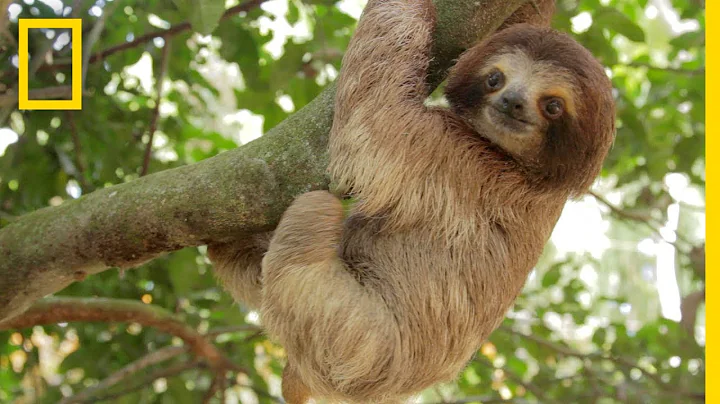
Changes in forest structure lead to changes in species composition and significant differences in soundscapes between undisturbed and disturbed forests.
Tropical forests cover 12% of the Earth’s land surface but are home to approximately two-thirds of all terrestrial species. Spanning the vast Amazon River basin and South America's Guiana Shield, the Amazon Basin is the world's largest remaining area of tropical forest and is home to more animal species than any other terrestrial landscape on Earth.
Spotting wildlife in these dark and dense forests filled with insects and spiny palm trees is always challenging. This is because of the nature of Amazonian biodiversity, where there are a small number of abundant species and a large number of rare species that are difficult to adequately survey.
Understanding which species are present and how they relate to their environment is crucial for ecology and conservation, providing us with essential information about the effects of human disturbances such as climate change, logging or wood burning. This, in turn, can also inform us about sustainable human activities such as selective logging – the practice of cutting down one or two trees and leaving the rest intact.
As part of the BNP Bioclimate Project, we are deploying a range of technical fixes, such as camera traps and passive acoustic monitors, to overcome these barriers and deepen our understanding of Amazon wildlife. These devices beat traditional surveys by continuously collecting data without human intervention, allowing animals to go about their business without interruption.
Eyes in the Trees
Camera traps are small devices that are triggered by changes in nearby activity, such as animal movement. They are crucial to our field work in the Paratapahos National Forest in northwestern Brazil, allowing us to investigate whether disturbances such as climate change affect the presence and behavior of animals, which in turn are responsible for natural processes required.
Animals scatter seeds and regenerate forests, which is one such process. By eating fruit or carrying nuts, they often excrete or discard the seeds elsewhere. Our research shows that at least 85% of the tree species in our plots have their seeds dispersed by animals.
We also know that many of these animals are strongly affected by disturbance. To better grasp the impact of losing these seed-dispersing species, we need to know which plants spread to which plants and how far.
We tried to observe this by setting up cameras at the foot of fruit trees at our study site, revealing which species are eating which fruits and thus carrying seeds into the forest.
The investigation produced over 30,000 hours of footage and we were able to identify 5,459 videos that contained animals. An impressive 152 species of birds and mammals have been recorded, including rare records of endangered species such as the vulture parrot ( Pyrilia vulturina ).
These videos include incredible insights into animal behavior, such as an ocelot hunting a common opossum (Didelphis marsupialis), an ocelot (Leopardus pardalis), and a giant anteater (Myrmecophaga tridactyla) carrying a baby on its back. , even a curious female capuchin monkey (Sapajus apella) examined a camera and eventually dropped it to the floor.
Importantly, we also recorded 48 fruit-eating species, including species considered important seed dispersers, such as the South American tapir (Tapirus terrestris), which due to its size is able to disperse large seeds over greater distances distance.
Our research shows that birds such as the White-crowned Guan (Penelopepierata) and mammals such as the Silver Tamarin (Mico argentatus) and Amazon Brown-spotted Deer (Mazama nemorivaga) are common consumers of fruit. Many of these species are overhunted in the study area, which may have knock-on effects on forest regeneration.
Pulsating forests
Acoustic recorders, on the other hand, are key to compiling inventories of species-rich bird communities. In fact, although birds are rare in dense forests, their calls signal their presence.
When ornithologists study tropical birds, they are limited by the frequency of counting because returning to individual locations is often logistically challenging. As a result, traditional surveys are typically long in duration—between 5 and 15 minutes—with only limited repeat counts at each site surveyed. This means that only a small proportion of the time period when birds are most active - the two hours after sunrise often known as the dawn chorus - can be surveyed.
However, birds do not all sing at the same time: a few species prefer to sing early in the morning, most wait until the weather is slightly warmer and the sun has fully risen, and some rise later. By limiting yourself to a small number of surveys, it is difficult to cover the entire time period and detect all species present. Additionally, surveys conducted over just a few days mean that factors such as weather or the presence of predators on certain days can completely change which species are detected.
Our research found that by setting up an automated acoustic recorder to record 240 very short 15-second recordings, totaling a one-hour survey, we could record 240 very short 15-second recordings for each session of our survey, compared to four 15-minute surveys that replicated the human duration. More than 50% of species surveyed were recorded at each site. Additional surveys allowed us to extend the survey period to more days, but most importantly across the entire Dawn Chorus. We found that there is a small group of species that prefer to sing between 15 minutes before and 15 minutes after sunrise, and if we did multiple surveys during that time we would only really have the possibility of detecting whether they were - and that was only possible with an automated recorder possible.
These more complete surveys allow us to better estimate the species that live in these highly diverse areas—and the species that disappear when forests are cleared or burned. Thanks to this approach, we were able to detect 224 bird species at 29 sites, requiring only a total of one hour of survey time per site.
The presence of species in intact and disturbed forests also confirms our previous research that undisturbed old-growth forests harbor unique bird communities that are lost when forests are damaged by selective logging or wildfires. The
recorder also allows us to collect data over extended periods of time, with over 10,000 hours recorded to date.
However, collecting data on this scale also means that scientists cannot listen to all the recordings. Instead, the new field of ecoacoustics has developed statistical techniques to characterize entire soundscapes. These acoustic indices measure changes in amplitude and frequency to measure how busy or varied each soundscape is. These can efficiently process large amounts of acoustic data by eliminating the need to identify individual sounds.
We use acoustic indices to show that undisturbed old-growth forests have unique soundscapes that can be identified through machine learning techniques. In turn, these data allow us to compare soundscapes disturbed by phenomena such as fire or logging and identify which groups of species are most affected.
In conclusion, camera traps and voice recorders allow us to have eyes and ears in the forest even when our researchers are not there. As technology evolves, we will continue to use the latest techniques to better understand animal behavior and ecology, and how these techniques can be used to better assess and protect the habitats they inhabit.
We are particularly interested in developing deep learning models to identify species and, in some cases, differentiate between individuals of the same species. Images and recorded sounds from automated loggers are opening up new ways of understanding animal abundance and behavior, providing new insights into the secret world of tropical forest fauna.





















